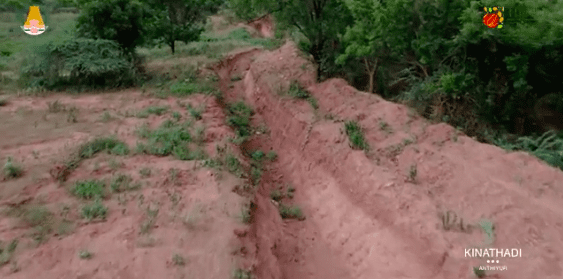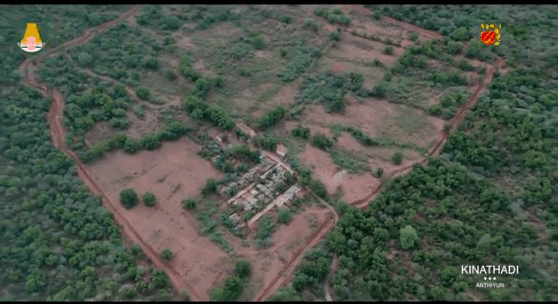Along with the human population, the population of predators like the tiger and large herbivorous animals like the elephant has also been growing at a fast rate due to conservation efforts. This leads to more negative man-animal interfaces that lead to loss of property, crops, and in some cases, lives. There is no concrete solution to these conflicts but the state and the central forest and wildlife departments are doing all they can to minimize it, be it creating more awareness about such interactions or shifting the human population from the fringe areas.
Recently, in Tamil Nadu, about 25 kms of Elephant Proof Trenches were dug at a cost of Rs.127.89 lakhs under the GOTN & JICA projects. The dimension of these trenches are 3 meter top width, 1 meter bottom width with 2 meter of depth, and they don’t intersect with elephant paths. As a result, some 12 tribal villages are protected from crop losses, direct conflicts with elephants, hence promoting co-existence.

Now, the forest department of Tamil Nadu is planning 125 kms of such trenches to save more villages. In an exclusive conversation with Indian Masterminds, Chief Wildlife Warden of Tamil Nadu Mr. Srinivas Reddy, said that these trenches have really benefited the community in Kovilpalayam near Coimbatore because they are all ready to maintain them.
OLD CONCEPT
When asked about the history of such elephant proof trenches, PCCF, Biodiversity (Tamil Nadu) Dr. Shekhar Niraj told us that it came from Africa about four decades back. Since then, in various state of India, where the population of elephant is large, such as Karnataka Kerala, etc., these are being built. However, the trenches only work out when they are maintained properly and the dimensions are correct. Otherwise, elephant will easily cross them.
NEEDS COMMUNITY HELP
The digging up of these trenches is a costly job, plus it needs regular maintenance, which is generally not possible for the government bodies. “We need community help. If they want it, they would need to help. If the extra soil is left on the sides of the trench, it can again fall back into it during the monsoon. Besides, elephant is a very intelligent animal. Sometimes, they even fill it up with the debris and cross over. Also, some local farmers fill them up so that their cattle could cross. In all these cases, the responsibility falls on to the community to safeguard them,” said the Chief Warden.

He also mentioned that there are times during the digging when big rocks come up which can’t be moved manually and needs blasting. Since, blasting is not allowed in forest areas, so, trenches can only be dug where the land supports and the community is ready.
SMALL LIFESTYLE CHANGE CAN STOP IT
Mr. Reddy also emphasized that with the growth of the wildlife population, the conflict is going to increase. One can only minimize it. “With time, the behaviour of animals also changes. For example, earlier the elephants wouldn’t come towards fringe areas of human habitation during monsoon. That is the time for sufficient fodder and water. Yet, now, they are getting used to palatable crops and move towards those areas,” Mr. Reddy said. Co-existence is the only way forward and for that to happen, we, humans, need to adopt some small lifestyle changes, he further said. The awareness programme is already in place, and people living in nearby fringe areas are alerted timely about the presence of elephant herds. All they need to do is stop moving when such alerts are there. “Mostly daily wage workers live in that area and they would usually come back drunk late in the evening. They should avoid this. Elephants also have a moving pattern. During the day, they could be spotted near water holes in the forest, and in the evening, they will move outside the forest. People should avoid going out during that time,” he said in conclusion.

































